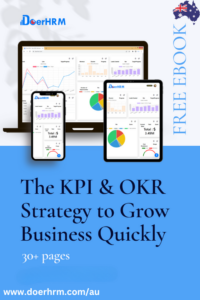360-degree feedback, also known as multi-source feedback, is a performance appraisal method that integrates feedback from all those who see and are affected by a candidate’s performance. Medium and senior-level employees typically utilize this tool. Because of the intricacy of their jobs, the organization can collect enough data from all stakeholders to make a valid assessment and 360-degree performance appraisal.
The 360-degree performance appraisal is used by most firms that focus on employee development to assess employee performance and potential and to enable employees to chart their career paths based on the feedback. Before making a critical choice on a professional’s career, organizations gather 360-degree input about them. Let’s go more deeply into 360-degree performance appraisal.
Clarifications on 360-Degree Performance Appraisal
Some modern management strategies offer as much promise as 360-degree performance appraisal while yielding few results. Companies frequently use this strategy to get a 360-degree performance appraisal of workers, to improve a leader’s behaviors, provide insight during leadership development courses, and assist in the formation of more effective teams. They feel that 360-degree performance appraisal will either change or strengthen their bosses’ motivation to change their habits. Those expectations, unfortunately, are unwarranted and unsupported by science. Here are some clarifications about 360-degree performance appraisal.
1. Feedback does not always result in a change
Many firms feel that simply giving a manager a 360-degree feedback report, showing a 360-degree performance appraisal of the manager will cause them to modify their behaviors without any further action. According to research, when feedback is focused on our actions rather than our skills, we are less motivated to improve.
2. Disconnect does not always spur improvement
It’s a popular assumption that if we notice a disconnect between how we see ourselves and others, we’ll be driven to bridge the gap. In truth, research shows that when we are confronted with a perceptual gap, we try to justify or explain it away as much as possible. We’re not fighting feedback; we’re dealing with “cognitive dissonance.” Our minds work quite hard to maintain our carefully cultivated, generally positive self-image.
3. More data does not equal better outcomes
A typical 360-degree feedback report contains 50+ pages of graphs, charts, norms, icons, and comments that indicate 360-degree performance appraisal. It’s practically impossible for a manager to know which items are most important to focus on and how to enhance those behaviors without hours of guidance from a coach or human resource leader. A negative feedback experience that leaves us perplexed or irritated provides a significant obstacle to action.
How to make 360-degree performance appraisal effective
Making 360-degree performance appraisal effective entails making it as simple as possible for the management to act on the result. Here are three methods to ensure that managers will follow the 360-degree performance appraisal: Don’t give it a rating; instead, use this as a guide: The conventional 360-degree performance appraisal system assigns a score to managers based on how excellent or poor they are at certain actions. This isn’t going to help anyone change. Instead, utilize a scale to advise management whether they should “Do More” or “Do Less” on a specific action.
Managers are too busy to sift through complicated 360 degrees performance appraisal reports to determine their change priorities. The first page of their 360-degree performance appraisal reports should include a list of the most important steps they need to take to improve, therefore, focus on these behaviors.
1. Tell the manager how they’re going to change
A well-designed 360-degree performance appraisal report should include explicit “start, stop, or continue” recommendations from raters that detail how the manager should improve those crucial few behaviors.
2. Don’t include self-ratings or norms
We dislike being compared to others, especially when the comparison is unfavorable. Self-ratings and external norms only raise our reluctance to change if we fall short of our goals, but they don’t inspire us any further if we exceed them.
Conclusion
Human resource leaders can help managers to be far more inclined to improve their habits if they help them understand the implications of their actions. Obtaining 360-degree performance appraisal input does not have to be uncomfortable or ineffective. 360-degree performance appraisal can assist managers in making critical behavior changes fast and simply by focusing on the core science and providing facts in a practical and easy-to-understand manner.
To get one of the best 360-degree performance appraisal tools that can help your team to improve performance every quarter, book a free demo with our performance experts!










I’ve been in HR for over a decade, and I can’t agree more with the insights shared here. In my experience, transparent communication and empathy have proven to be instrumental in resolving workplace conflicts and maintaining employee satisfaction. It would be great to hear more success stories from others in the HR community!
Thanks for sharing. I read many of your blog posts, cool, your blog is very good.